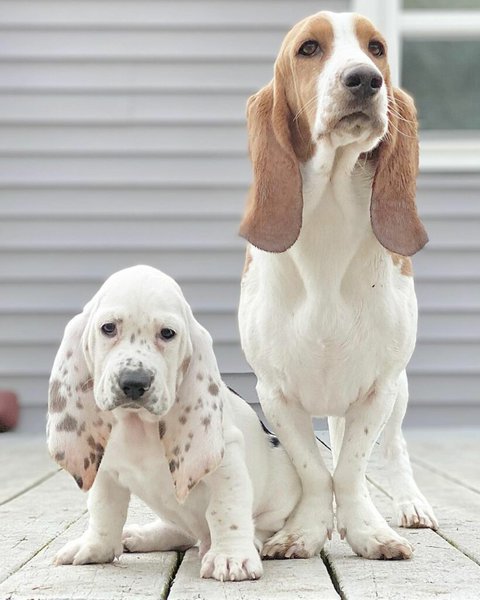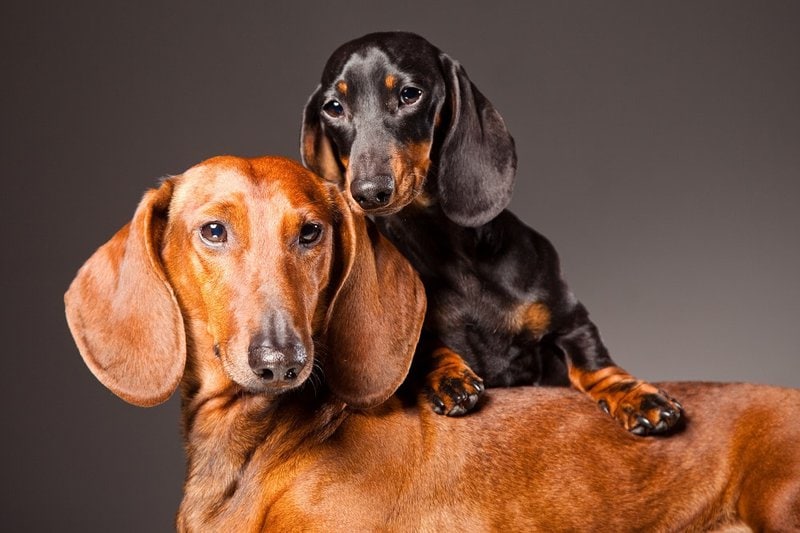One of the decisions several dog owners will have to make at one point or another is whether or not to bring a new pooch home. And trust us when we say making the decision on whether or not to get a second dog is not as easy as it sounds.
So, when does it become necessary to get a second dog? Getting a second dog is effective at curbing separation anxiety that tends to develop in dogs when their owners are away for considerable periods. In addition, the introduction of a second pooch affords a lonely pooch much needed canine companionship, as well as a playmate, and you will also be the recipient of extra canine love from your new furry friend.
Introducing a second dog into a home isn’t always smooth sailing, and there is a huge chance of the previous dog acting out of jealousy, thereby leading to hostility between both dogs. And it is for this very reason that certain steps, which are outlined in subsequent sections of this article, have to be taken before and while introducing a second dog to your home to ensure peaceful coexistence between both pooches.
However, before we delve into the complexities and dynamics of bringing a new pooch home, let’s take a look at what both you and your dog stand to gain from the introduction of a second pooch to your home.
What Are The Benefits Of Having 2 Dogs?
The benefits of having two dogs include easier training for both pooches, a reduction in the amount of exercising that’ll need to be carried out for individual dogs and relief against separation anxiety.
In addition, bringing home a second dog means you’ll receive more love and you may also help in saving an animal’s life!
Easier Training
Dogs are pack animals by nature with older dogs typically assuming a leadership role, and owning two pooches can make it significantly easier to train your furry friends.
That said, older dogs can pass down tricks to the newer pooches, and a dog that already knows the dos and don’ts of the home can easily pass such knowledge down to the younger pooches.
Potty training is easier with two dogs as well, as a pooch will naturally want to relieve itself where the other dog has done business.
Exercise Needs Are Reduced
Two dogs will spend the greater part of the day play-wrestling and chasing each other around, thereby burning up a lot of energy and maintaining physical fitness in the process; Hence, you may not need to carry out as much exercise for both pooches as you would need to do with a dog raised alone.
Regardless, this isn’t a free pass to completely stop exercising your pooches, and it is recommended that you continue taking both dogs on daily walks. And you should also spend a considerable amount of time with each pooch per day.
Helps Against Separation Anxiety
Owning two dogs can be quite effective against preventing separation anxiety from developing in both pooches, especially if you’re usually away from home for a considerable period of time.
Raising two dogs works very well against separation anxiety because both pooches will play and bond well in your absence, thereby helping to alleviate fear or panic that would otherwise have been created by your absence.
Twice The Attention And Love
The benefits of owning two dogs aren’t limited to just the physical aspect, and with two pooches, you’ll get double the love and attention you’ll otherwise receive with one pooch.
Be prepared to laugh a lot and twice as hard too, particularly if both doggies have a tendency for mischief and goofiness.
You’ll Be Saving A Life
Millions of dogs are left without a home and family in animal shelters per year, thereby leading to a significant amount of these pooches being euthanized. Hence, by adopting and bringing home a second dog from an animal shelter, you’ll be helping to save a life.
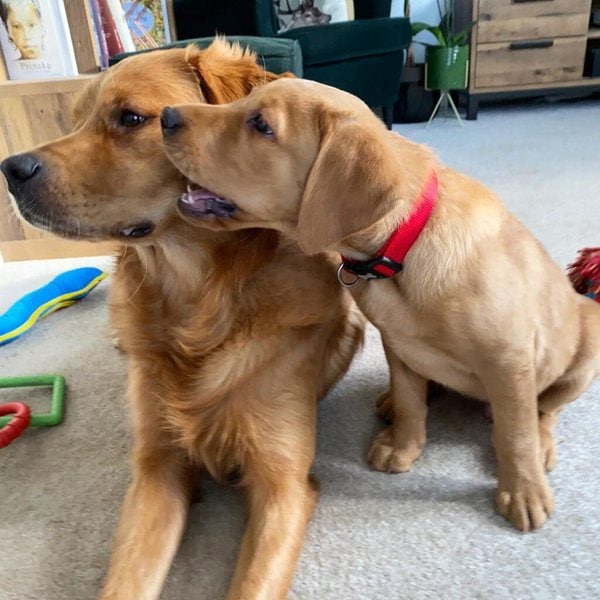
What Is Bad About Having Two Dogs?
Having two dogs can result in issues with living space, and you also constantly have to be on the lookout to prevent acts of mischief by both dogs.
In addition, there is a possibility that both dogs don’t get along with each other, thereby resulting in fights, and that both pooches can teach each other bad habits.
As wonderful as it may be to own two dogs, there are certain cons associated with owning and raising two pooches under the same roof.
Space Issues
Raising two dogs in the same home can be quite uncomfortable, especially if the pooches belong to any of the large dog breeds, and the house isn’t particularly big.
If you attempt to raise two dogs while living in a considerably small apartment, things will get really stuffy quickly, especially as the dogs grow bigger, and that peculiar dog smell will always be in the air as well.
Double The Trouble
Dogs are prone to mischief, and raising two pooches means you have to be on your toes all the time to thwart acts of mischief in and around the home.
Owning Two Dogs Is Expensive
While it is true that dogs can share toys, food bowls and even beds, raising two pooches can turn out to be quite expensive in the long run.
Firstly, consider annual and unexpected veterinarian visits, and the fact that you may also have to get both dogs vaccinated, which typically costs more money. And this is no rocket science, but two dogs tend to consume more food than one!
Also, if one of the pooches tends to be extremely possessive with the toys, you will have to purchase a new set of toys to prevent fights from breaking out.
Possibility Of Conflict
The decision to own and purchase a second dog is based on the assumption that the selected pooch will get along well with the current one.
However, this isn’t always the case, and if both dogs are hostile towards each other, or one of the pooches is the kind that is fiercely possessive of certain items in the home, you should be prepared to break up a lot of fights.
Transfer Of Bad Habits
We’ve mentioned earlier how older dogs can help train and socialize younger pooches, and this transfer of traits is also applicable with bad habits.
Puppies tend to pick up on bad behaviors from the older pooches, and behavior learned in this manner is typically more difficult to correct.
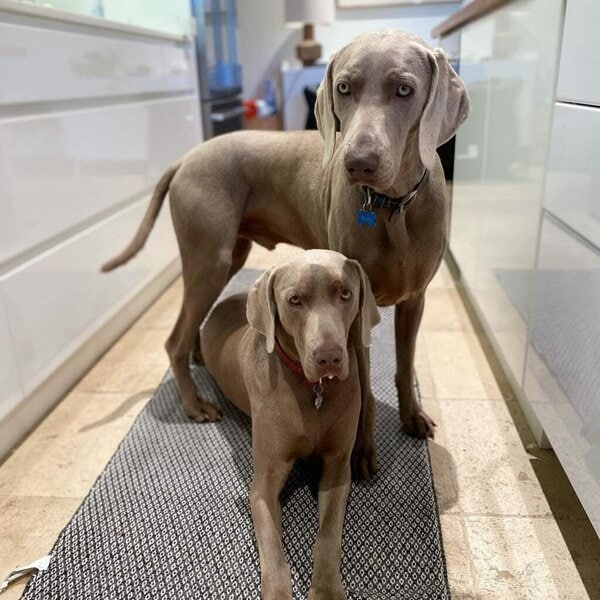
Are Dogs OK Being The Only Dog?
Generally, most dogs will thrive well without the presence of another pooch in the family, but this is highly dependent on the dog’s emotional and physical needs being met.
Just like humans, dogs are extremely social animals by nature, and they require constant attention to stay happy and emotionally okay. When dogs are raised together, pooches in the pack can easily meet each other’s emotional needs by playing together and creating strong social bonds over time.
Dogs raised alone are equally as capable of creating strong emotional bonds with their human families, provided they are provided with the required amount of time, attention and care. However, the problems with a pooch being raised as a lone dog typically stems from the owner’s inability to provide the needed attention and care.
How Do You Know When A Dog Is Lonely?
Leaving a pooch alone without human attention for considerable periods doesn’t only make the pooch feel extremely lonely, but it can lead to the development of certain undesirable characteristics and separation anxiety in the doggie.
That said, you can tell that a dog is lonely and devoid of the required level of attention and care when you notice behaviors such as:
- Aggressiveness when the owner is preparing to leave home
- Excessive licking of body parts that may degenerate to wounds and open sores
- Clinginess and following its owner around
- Destruction of household properties, especially when the owner isn’t around
The feeling of loneliness in a dog can typically be countered by the introduction of a second pooch. But a certain level of human interaction is also needed to aid with the doggie’s socialization and emotional development.

Are Dogs Happier With Humans Or Other Dogs?
Some dogs prefer and are happier with human interaction, while other pooches thrive best when socializing with dogs from the same or different species.
Ultimately, each individual dog has different personalities, preferences and complexities; Hence, it may be quite difficult to tell, based on the actions of other pooches, how a dog that is used to being raised as a lone pooch will react to the introduction of a second dog.
Will Your Dog Get Jealous If You Get Another Dog?
In some cases, however, older dogs tend to be jealous when a new pooch is added to the family. And this typically leads to the pooch exhibiting strange behaviors, such as whining or snarling when the new dog is being petted, attempting tricks to try and gain your attention, excessive display of affection towards the owner and a tendency to withdraw.
This behavior is a completely normal aspect of canine psychology, and it only comes to the fore because your pooch, that is used to being your only companion, suddenly has to deal with the presence of a new fido, without proper measures being put in place to introduce both dogs.
And if the new dog is getting all the energy and attention that was formerly being bestowed on the old-timer, chances are that the older pooch will become jealous, act out and may slip into depression, if the appropriate measures aren’t taken to manage the situation.
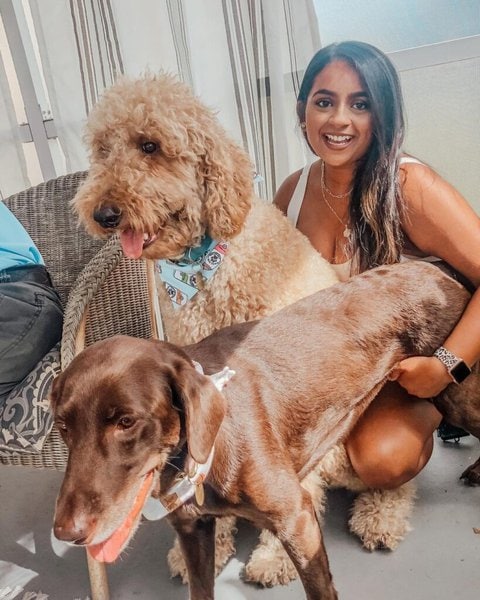
Does Gender Matter When Getting A Second Dog?
Gender generally plays an essential role in determining whether or not your new dog will get along well with your current pooch.
Although, it is quite possible for dogs of the same sex to get along very well, several animal behaviorists are of the agreement that pairing two pooches of opposite genders is the way to go, if you’re to raise a second day.
Dogs are hierarchical by nature, and in every dog pack, there is usually only room for one top female and one top male pooch. Consequently, raising two dogs of the same gender means that sooner or later, both dogs will fight to establish dominance in the pack.
Raising two dogs of different genders means you’re giving room for both pooches to be alphas of their genders, thereby quashing any potential rivalries.
However, it’s not all doom and gloom, and you can raise two dogs belonging to the same gender. However, to establish a natural hierarchy and to prevent fights from breaking out, it is recommended that the new pooch be significantly younger than your current dog.
Other Factors To Consider When Choosing A Second Dog
The decision to get a second dog is not something that should be taken lightly, and apart from gender, there are several factors that need to be put into consideration before making a decision on this matter.
What Is Your Current Pooch’s Personality and Temperament Like?
Firstly, you need to consider your current pooch and how it may react to the introduction of a new pooch. Some dogs tend to become extremely jealous when a new dog is brought home, thereby leading to bad blood between both pooches.
However, this jealousy and rivalry can be avoided if proper arrangements are made to introduce both pooches in a calm, serene setting.
Is Your Current Dog Well Behaved?
You also need to consider your current dog’s behavior and whether or not there are undesirable traits that can be passed on to the new dog. Most animal behaviorists suggest waiting for, at least, one year before getting a second dog, as this gives the old pooch enough time to bond well with its owners and learn house rules that can then be easily passed on to the new pooch.
Do You Have Enough Space To Raise A Second Dog?
In addition, you need to consider your environment and determine whether or not there’s enough space to raise a second dog.
Can You Afford To Raise Two Dogs?
Cost is another factor that should be considered, and you need to be sure that you’ll be able to cover the living expenses of both dogs. If you’ve been finding it difficult to afford food, vet bills and visits to the groomer, adding a second dog may not be the right move for both you and the pooches.
Physical Status Of Both Dogs
Pairing two dogs that are on the opposite ends of the size spectrum may not be the best move, as the larger dog may accidentally trample on its small furry friend while they are both playing.
Similarly, elderly dogs may not be able to cope with the high energy displays of puppies or younger pooches; Hence, attempting to pair them both may result in a mismatch.
That said, if you’ve decided that getting a second dog is the right move for your family, the steps to properly introduce this new pooch into your home are outlined in the following section.
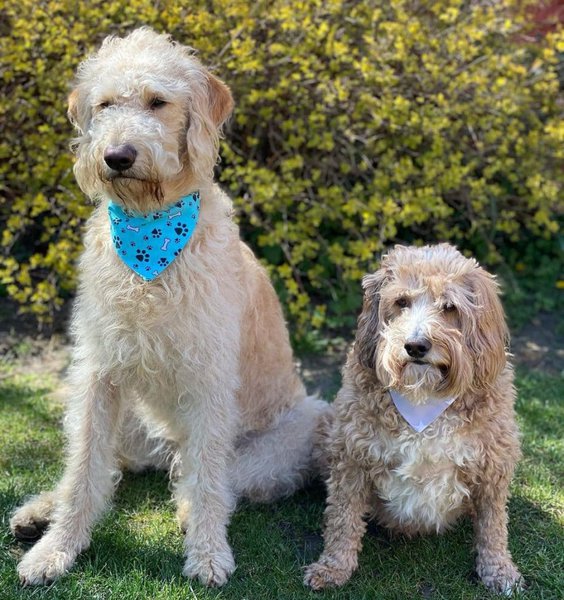
How Do You Introduce A Second Dog?
You should introduce a second dog to your current dog by allowing both dogs to meet and get acquainted with each other on neutral ground before the new pooch is brought home.
Slight restraint may also be needed to ensure that the introduction process goes smoothly.
Purchase New Equipment For The Second Dog
We’ve stated earlier that dogs can share toys, water bowls and beds. To avoid rivalry and resource guarding issues, and reduce them from occurring too frequently, it is best that you purchase new sets of the aforementioned items for the second pooch, and this should preferably be done before bringing the pooch home.
Introduce Both Dogs On Neutral Ground
To avoid issues that may stem from territoriality, it is best that you introduce a second dog to your old pooch on neutral ground. You can have a family member or trusted friend bring the current dog to a quiet park or an open field, while you also bring along the new dog.
It is also advisable that both dogs be on a loose leash, so that they don’t both feel restrained and can act naturally, while also giving you the opportunity to maintain control.
Give Both Dogs Room To Explore Each Other
Each dog will naturally display a certain level of curiosity about the other, and they may act on this curiosity by circling and sniffing each other’s rear ends. Eventually, this will progress to making eye contact, and both dogs may even growl at each other.
It is also possible that both pooches initially ignore each other, and if this is the case, you should let both dogs be for the time being – they’ll eventually come around and show interest in each other.
Also, while allowing both dogs to explore each other, you should be on the lookout for signs of aggression so that you can diffuse the situation, and prevent it from degenerating into a fight.
The initial meeting should be as brief as possible, after which you can then take both dogs on a normal walk.
Bringing The New Dog Home
After introducing both dogs at a neutral venue, you can proceed to bring the new dog home. If your dogs got along well at the park, you can let them both off leash in a fenced yard at home. And once they’ve played well enough, both dogs will be ready to come inside the house.
Your original dog should be allowed to enter the house first and roam the house unleashed, while the new pooch should follow, and be allowed to explore its new environment on a lead – By doing this, you’re establishing a hierarchy and giving the old dog a chance to welcome the new pooch into its home.
Once the new dog seems to have accepted and is comfortable with its new surroundings, you can unleash the pooch and let it roam free.
Supervising Play Time
For the first few weeks after bringing a second dog home, you should monitor interaction between both dogs to be sure that they are getting along well. Shower both dogs with praise when they interact nicely with each other, and you should also make sure to spend quality individual time with both pooches.
Never leave both dogs together at home unsupervised. And if it is absolutely unavoidable that you leave both dogs alone at home, employ the use of baby gates and crates to prevent altercations.

What Dogs Are Best In Pairs?
Dog breeds that do exceptionally well in pairs include German Shepherds, Beagles and Basset Hounds.
While it is true that most dog breeds can do well in pairs, provided that one of the pooches is slightly more submissive and that both pooches do not display the resource guarding behavior, the dog breeds listed as above possess qualities that make them excel particularly well when raised in pairs.
German Shepherds
German Shepherds make one of the world’s best and most common dog pairings, not only due to this breed’s outstanding level of intelligence, but also due to their friendliness towards other pooches.
German Shepherds are also extremely child-friendly, and raising them in pairs ensures they keep each other company and don’t tear up the house due to separation anxiety whenever their owner is away.
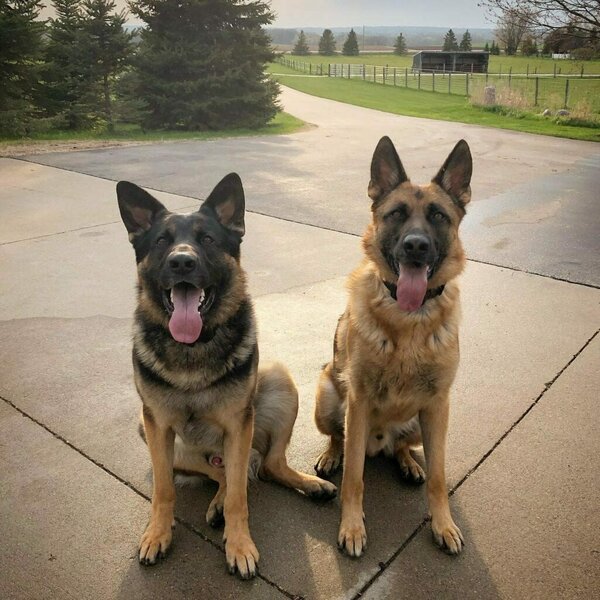
Beagles
Beagles have history as a hunting dog breed, and this is just one of the reasons these pooches do extremely well in pairs. Apart from their hunting history, Beagles are typically bred to live in a pack setting, and they are also one of the more common dog breeds around, which makes them significantly easier to pair.
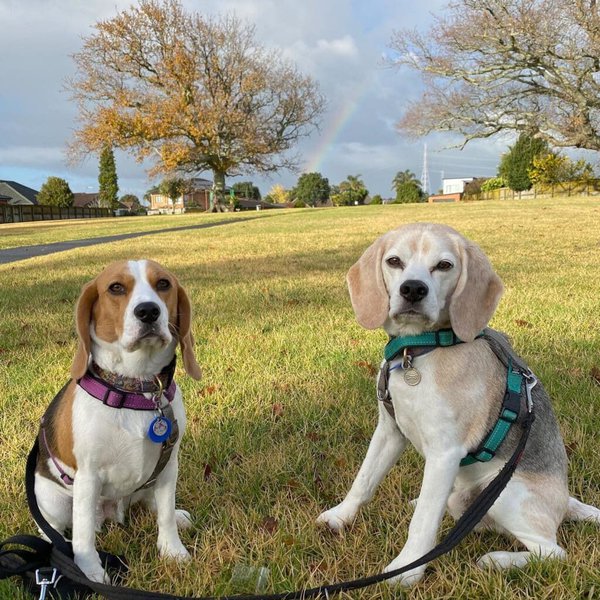
Basset Hounds
Basset Hounds, just like Beagles, were originally bred to hunt small prey, and they are another dog breed that thrive best when raised in pairs.
Basset Hounds are not only one of the friendliest dog breeds around, but they also have a high level of intelligence which makes them very trainable. In addition, they have a low tendency for aggressiveness, are low maintenance, and love nothing more than to roll around with pooches of the same breed – all qualities that are desired in an ideal dog pair.
